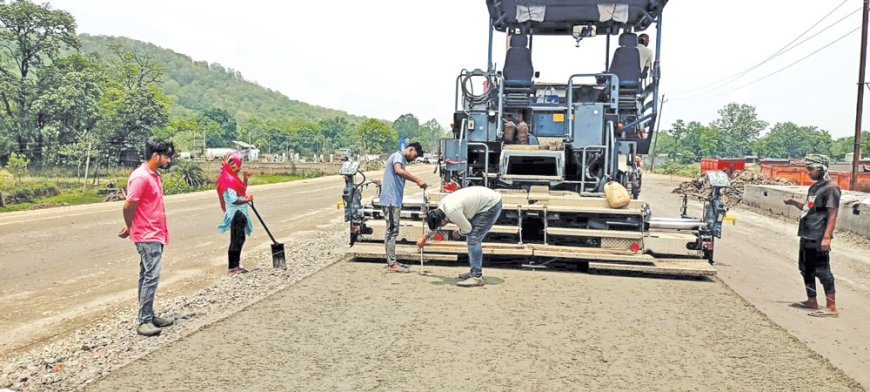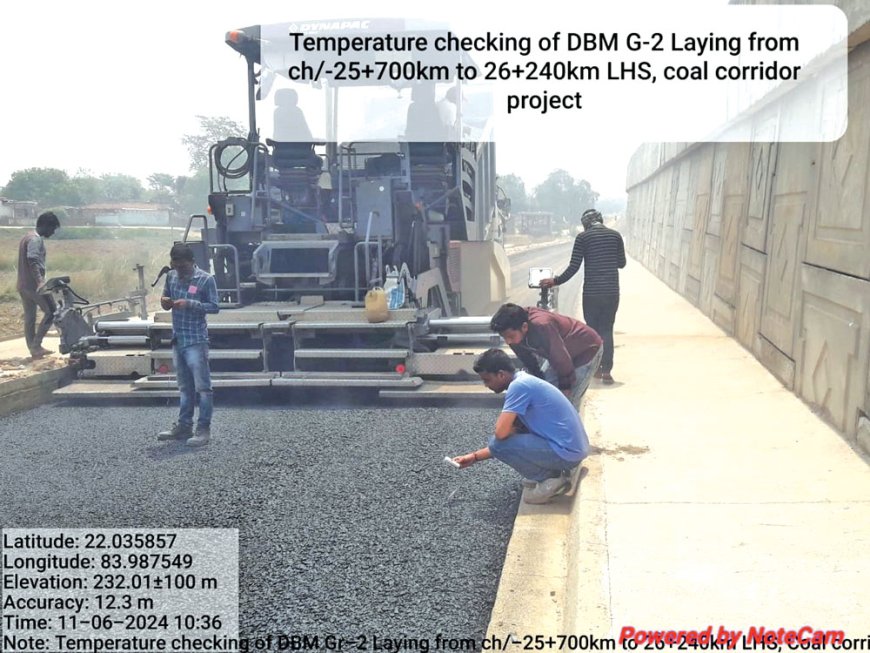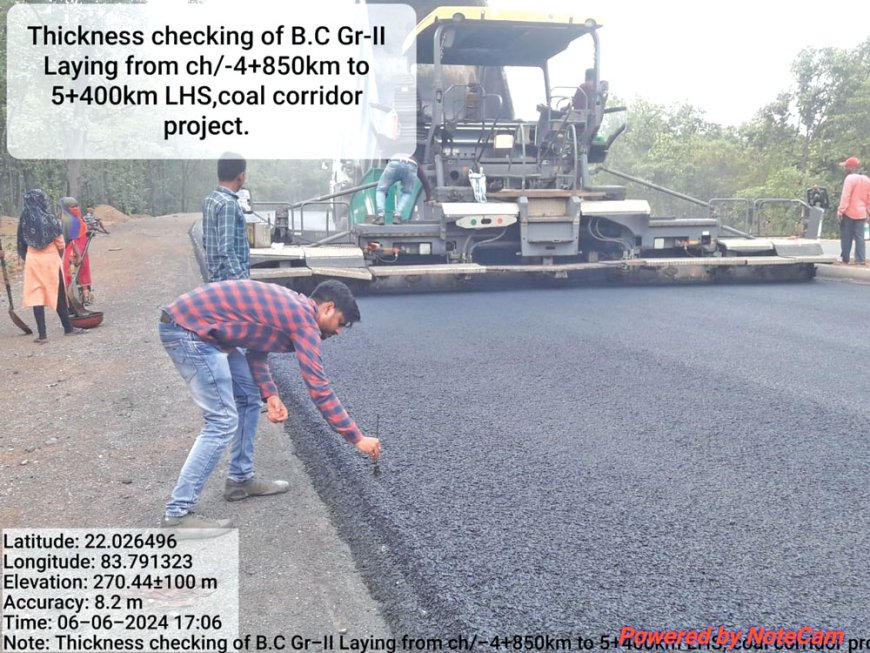Technological advancements continue to revolutionize the construction industry, enhancing project efficiency, accuracy, and safety.

Sanjay Kumar Sinha
What are the current trends in the roads and highway construction industry that you find most impactful? How has the industry evolved over the last decade, and how has your company adapted to these changes?
Over the past decade, India’s roads and highway construction industry has undergone significant transformations. Here are current trends in the roads and highway construction industry.
Technological Advancements: The adoption of advanced technologies, including automation, artificial intelligence, and sensor systems, is transforming construction processes. These technologies enhance efficiency, safety, and monitoring of road conditions, which is crucial for maintaining infrastructure in the face of extreme weather and heavy traffic.
Increasing use of Information Technology (IT) applications: IT applications are being progressively mainstreamed in all aspects of the road sector. A number of IT applications have been developed to aid on ground operations. Some major IT applications are; use of Electronic Toll Collection (ETC), development of Bidder Information Management System, Bhoomirashi, etc. MoRTH, NHAI and NHIDCL have also adopted an e-procuring and e-tendering system for procurement of goods and services. A mobile application system has also been launched for tag purchases and top up of FASTags called MyFASTag.
Focus on Maintenance and Upgrades: With the aging infrastructure, there is a growing emphasis on the maintenance and upgrading of existing roads rather than solely focusing on new constructions. This trend is driven by the need to extend the lifespan of roads and improve safety. The Ministry of Road Transport and Highways plans to install real-time sensors on national highway bridges to streamline maintenance and prevent collapses. These sensors will monitor critical parameters such as strain, deflection, vibration, tilt, displacement, temperature, corrosion, and scour.
Public-Private Partnerships (PPP): The PPP model is gaining traction in India, allowing for shared investment and risk in large infrastructure projects. This model facilitates faster project execution and access to private sector expertise and efficiency.

How do you handle project challenges such as weather conditions, terrain difficulties, and regulatory issues?
Monsoons can cause delays and damage, while extreme heat can affect workers’ health and slow down progress. To mitigate these issues:
Weather Forecasting: Use advanced weather forecasting tools to plan construction schedules and avoid working during extreme weather conditions.
Contingency Planning: Develop contingency plans for adverse weather, including alternative work schedules and protective measures for workers.
Terrain Difficulties: India’s varied terrain, from mountainous regions to coastal areas, can pose significant challenges. To handle these:
Detailed Surveys: Conduct detailed topographical surveys before starting construction to understand the specific challenges of the terrain.
Specialized Equipment and Expertise: Use specialized construction equipment suitable for the specific terrain. Also, employ workers with experience in working in similar terrains.
Regulatory Issues: Navigating the regulatory environment in India can be complex due to various laws at the national and state levels. To address these issues:
Understanding Regulations: Have a thorough understanding of all applicable laws and regulations. This includes environmental regulations, labor laws, and safety standards.
Legal Consultation: Engage with legal experts to ensure compliance with all regulations.
Liaison with Government Bodies: Maintain a good relationship with government bodies and local authorities to ensure smooth approval processes and resolve any regulatory issues.
In addition to these, there are other challenges specific to India, such as land acquisition issues, funding shortfalls, and ensuring the availability of construction materials and machinery. Addressing these requires strategic planning, efficient project management, and effective stakeholder communication. It’s also important to consider the environmental impact and aim for sustainable construction practices.

What are the key types of equipment you use for road and highway construction?
Excavators are essential for earthmoving tasks, including digging trenches and preparing foundations. They are versatile and can be equipped with various attachments for different functions. Motor graders are crucial for leveling and grading the road surface. They have adjustable blades that allow for precise shaping of the ground, making them ideal for preparing a stable base for road construction. Asphalt pavers are used to lay down hot mix asphalt on the road surface. They ensure an even distribution of asphalt, which is vital for creating durable and smooth road surfaces. Road rollers are used for compacting the asphalt or soil layers. They help achieve the required density and stability, which is essential for the longevity of the road. Cold planers are employed to remove the top layer of asphalt from existing roads. This is important for resurfacing and ensures that new layers adhere properly to the existing surface. Bitumin Batching Plants are used to produce asphalt mixtures by combining aggregates, fillers, and bitumen. They ensure that the asphalt used in road construction meets the required specifications and quality standards. Dump trucks are vital for transporting materials such as gravel, asphalt, and soil to and from construction sites. They facilitate efficient material handling during the construction process. Concrete mixers are used for preparing concrete for road construction. They ensure that the concrete is mixed to the right consistency and quality before being poured into forms or laid as a surface. Forklifts assist in moving smaller materials and equipment around the construction site. They are particularly useful for handling concrete blocks and other components required for road construction. Cranes are often employed for lifting and placing heavy materials and equipment, especially in more complex road construction projects where heavy components need to be positioned accurately.

How do you decide on the procurement of equipment – do you prefer buying, leasing, or renting?
In our construction consultancy, we carefully assess the equipment requirements for each project to ensure smooth operations and cost-effectiveness. We procure essential items such as surveying tools and office equipment to guarantee reliability. However, for specialized tasks that demand specific machinery or advanced software, we opt for renting or leasing. This approach allows us to maintain flexibility, utilize cutting-edge technology as necessary, and manage costs without long-term commitments. As a result, we consistently deliver high-quality services in sectors including highways, bridges, and urban development.
What technological advancements in construction equipment have significantly impacted your projects?
Technological advancements continue to revolutionize the construction industry, enhancing project efficiency, accuracy, and safety. Among the notable innovations shaping modern infrastructure projects are Network Survey Vehicles (NSV), Falling Weight Deflectometers (FWD), and Mobile Bridge Inspection Units (MBIU).
The integration of NSVs, FWDs, and MBIUs into construction practices has yielded profound benefits across infrastructure projects.








